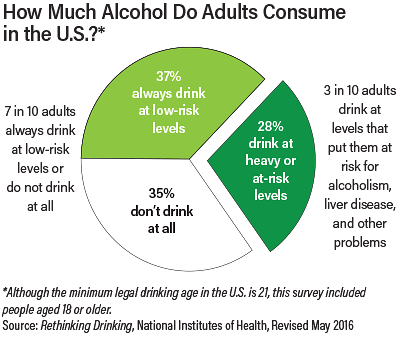More than 15 million adults in the United States struggle with alcohol use disorder (AUD), but only 1 in 12 receives treatment, according to the National Institute on Alcohol Abuse and Alcoholism (NIAAA). Part of this problem has to do with limited information about treatment options and how to go about getting treatment, said Lori Ducharme, Ph.D., a sociologist and program director at NIAAA’s Division of Treatment and Recovery Research.
Not knowing where to turn, some individuals call the NIAAA directly, often seeking help for a family member or friend. Inspired by these callers, Ducharme and a team at NIAAA developed the NIAAA Alcohol Treatment Navigator, an online tool that helps users gauge their drinking behaviors, provides information about treatment, and guides users through a step-by-step process to identify where they can receive high-quality, individualized treatment.
“We see this as a tool to empower consumers so that they get better information about addiction treatment and are more likely to find a particular option that will work for them,” Ducharme said. “Many people think treatment is limited to Alcoholics Anonymous or a long-term residential rehab program. They have no idea about the variety of outpatient options or the variety of specialists who can deliver outpatient treatment; all of that is explained in the ‘what to know about treatment’ section.”
The website links to directories of addiction specialists, including a list of board-certified addiction psychiatrists that is maintained by the American Board of Psychiatry and Neurology. It also outlines key components to look for when selecting a treatment program.
“There are plenty of directories out there where you plug in your ZIP code and get a list of providers, and you can also search Google, but there is really nothing that gives people a comprehensive strategy on what to do, how to assess the information they get, and make a choice based on what is good for them. This is especially true for people with co-occurring mental health needs, which is why we wanted to give people a variety of specialists who can assist them with AUD in their area.”
Ducharme said the navigator can also be used by clinicians. “They can use this tool to build a rolodex of local resources or to keep on hand in case they need to make a referral. They can also show patients the navigator to help guide them toward an evidence-based choice.”
Many people find it difficult to discuss their drinking behaviors when seeking care for the first time, Ducharme noted. Sample scripts are posted to help people ask questions when speaking with health care providers.
“Just like you would ask your primary care doctor or your surgeon questions about treatments in a routine health care environment, we want people to feel comfortable picking up the phone and asking questions about alcohol treatment.” ■
The website of the NIAAA Alcohol Treatment Navigator can be accessed
here.

